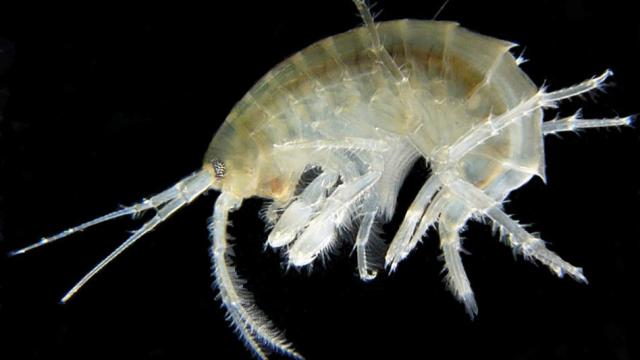Scientists found a radioactive signature of atomic bomb blasts in crustaceans living in the ocean’s depths, according to a new paper.
Depressions like the Mariana Trench extend nearly four miles beneath the ocean’s surface, and despite the formidable depths, are a host to a variety of organisms. And it turns out, some of those organisms have been consuming the radioactive leftovers from nuclear tests.
From 1945 to 1963, humans detonated atomic bombs in the atmosphere. This caused a spike in carbon-14 across the world. This carbon was quickly taken up by plants via photosynthesis, which were then consumed by animals. The presence of carbon-14 can now be used to date the organic matter that contains it.
With this in mind, researchers collected amphipods from three trenches, the Mariana Trench (the deepest point on Earth), Mussau Trench, and New Britain Trench, in 2017. Then, they measured the amount of carbon-14 in the amphipods’ tissues and gut contents. Carbon from the deep ocean should contain no carbon-14, while carbon from the surface would—and yet, the team found carbon-14 values in the deep-ocean creatures that were similar to the concentration of carbon-14 found on the ocean surface.
“The penetration of bomb 14C into the deepest fauna has not been reported until now,” they wrote in the paper published in Geophysical Research Letters. Interestingly, the presence of the surface carbon-14 signature means that the amphipods from the deepest trenches seem to rely mostly on organic matter from the ocean’s surface, like sunk corpses, to keep themselves alive.
The team was even able to use carbon-14 in the amphipods’ tissues to assign them approximate ages — some were at least 10 years old, a far longer lifespan than amphipods in shallow water or near the ocean’s surface. However, the age results are preliminary according to the paper, so it’s worth taking them with a grain of salt.
Human influence has already made it to the deepest ocean trenches — there’s plastic down there, after all. But pollution doesn’t just travel directly. It can permeate the food chain, even reaching the remotest animals. And carbon-14 has become a unique way to trace how organic matter travels through these food webs.
